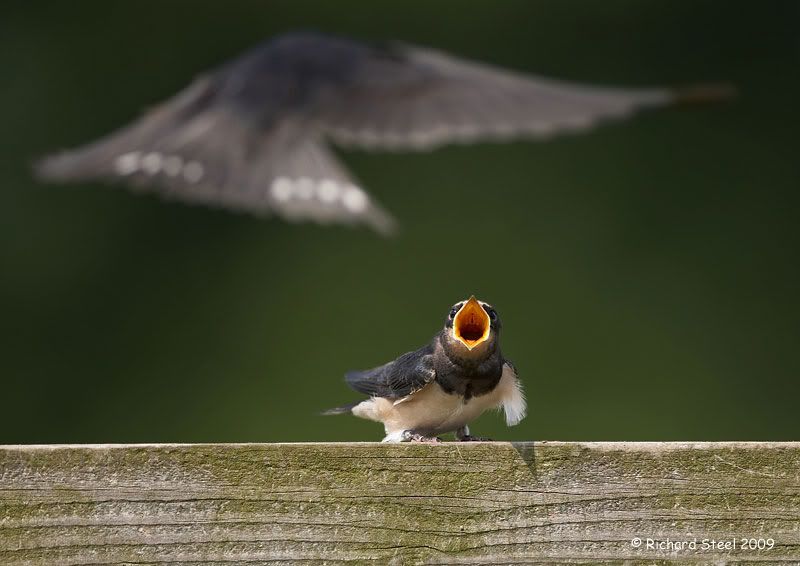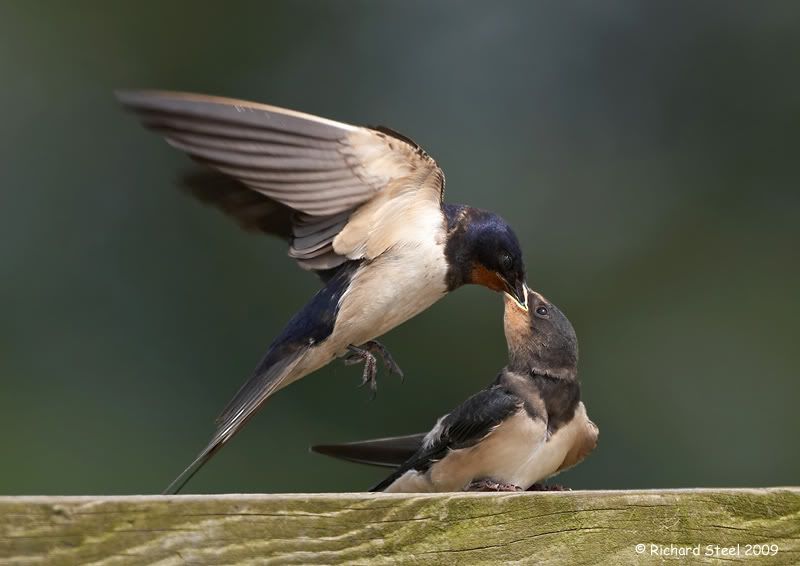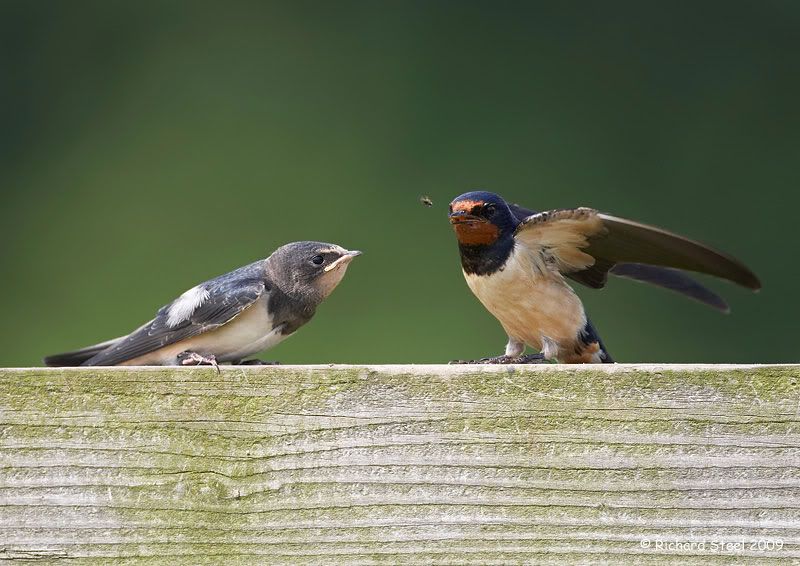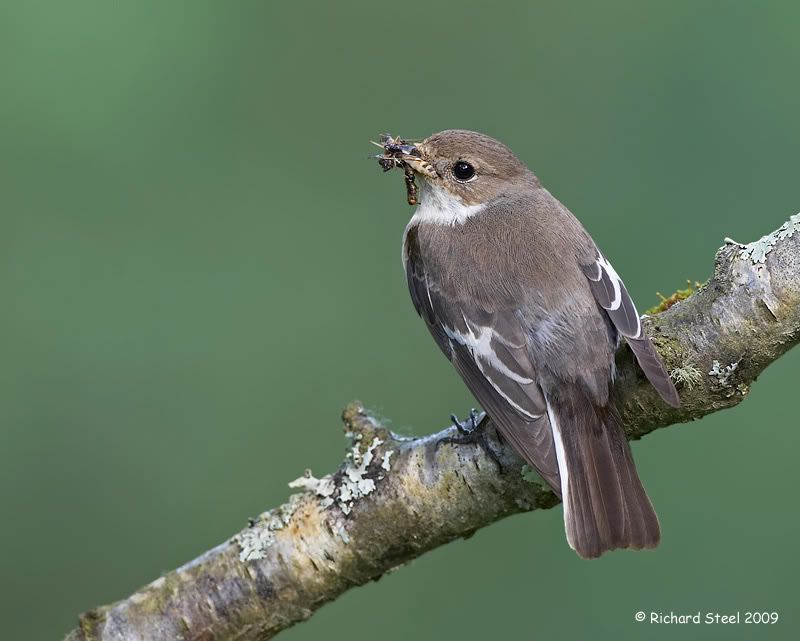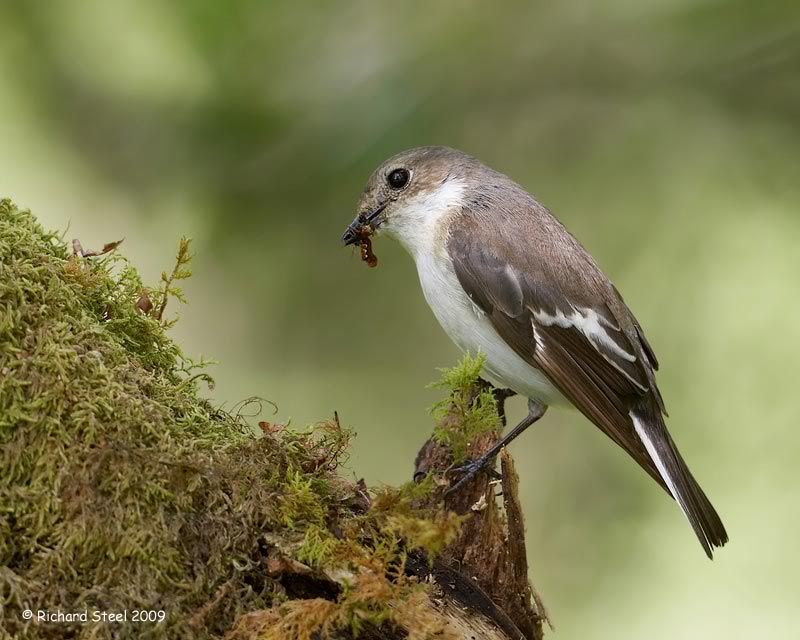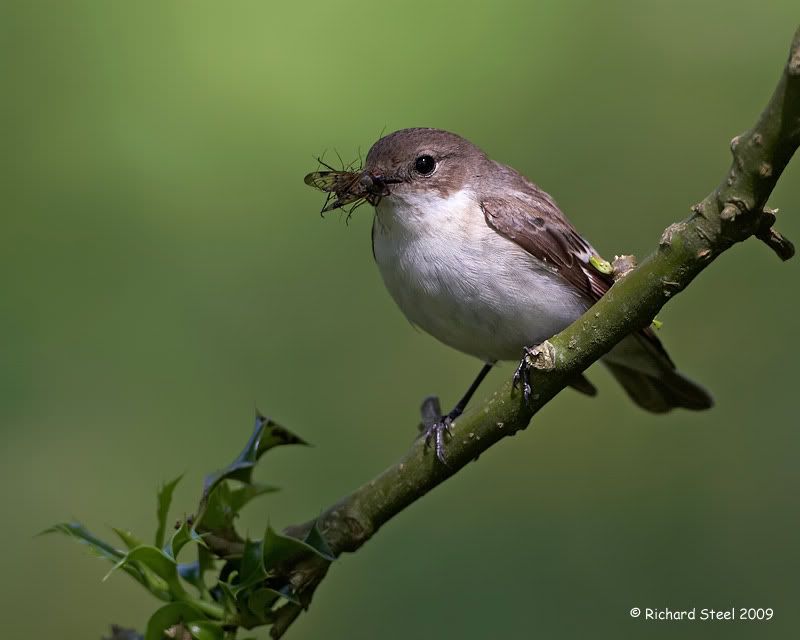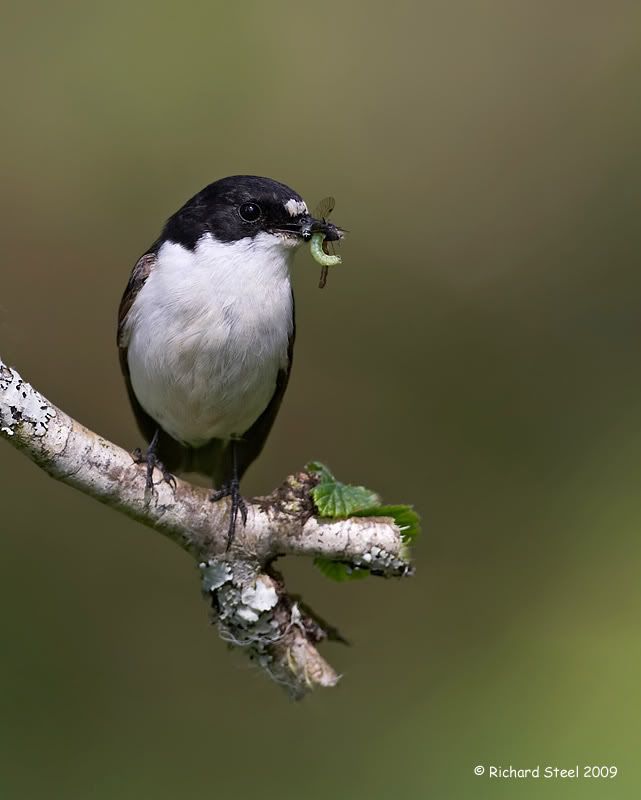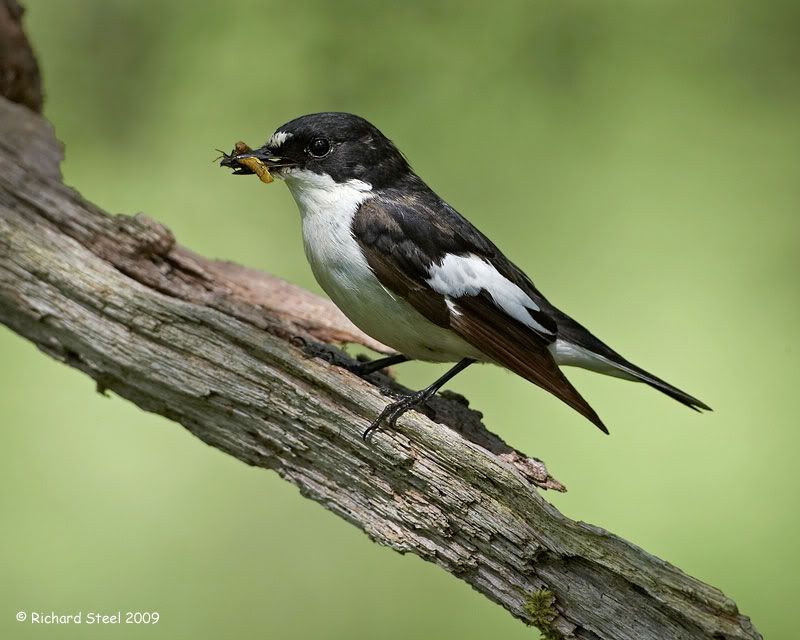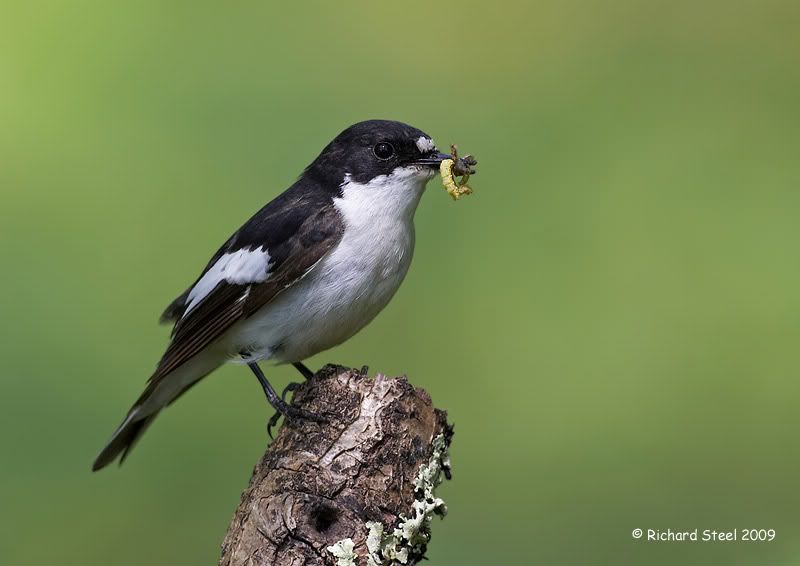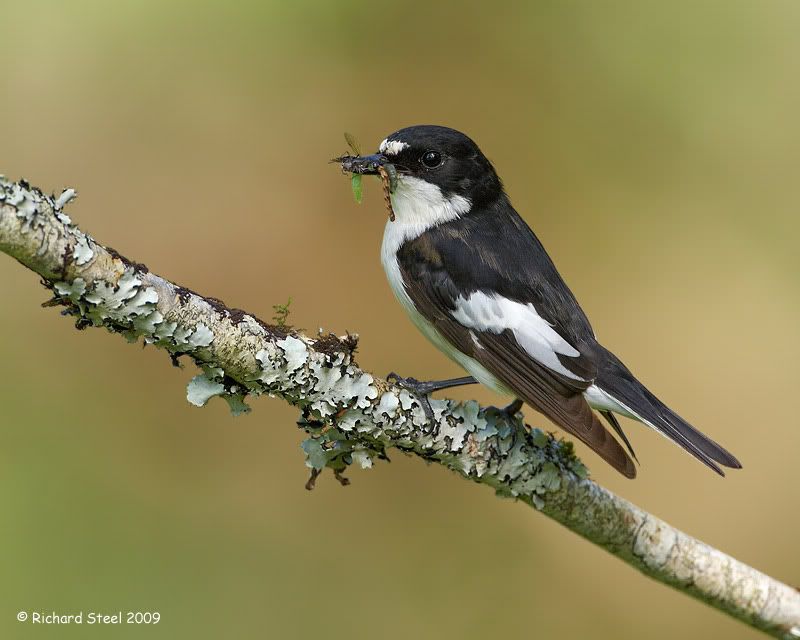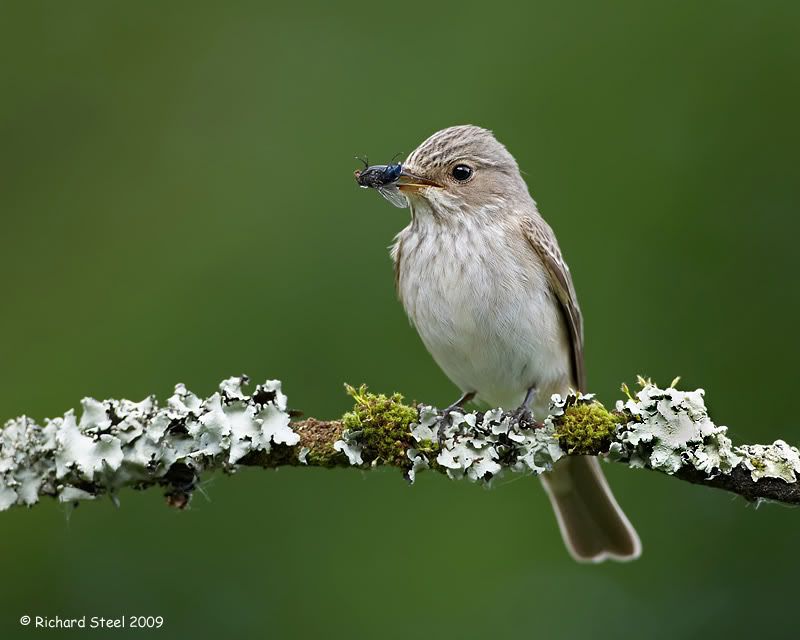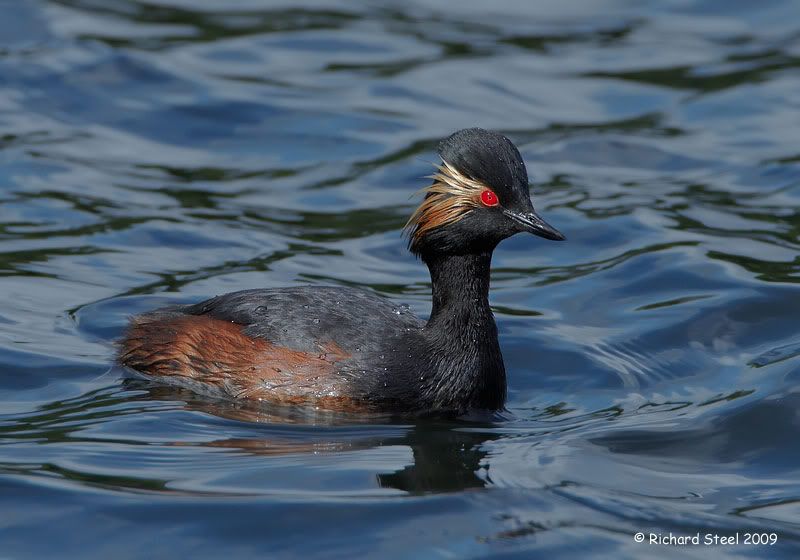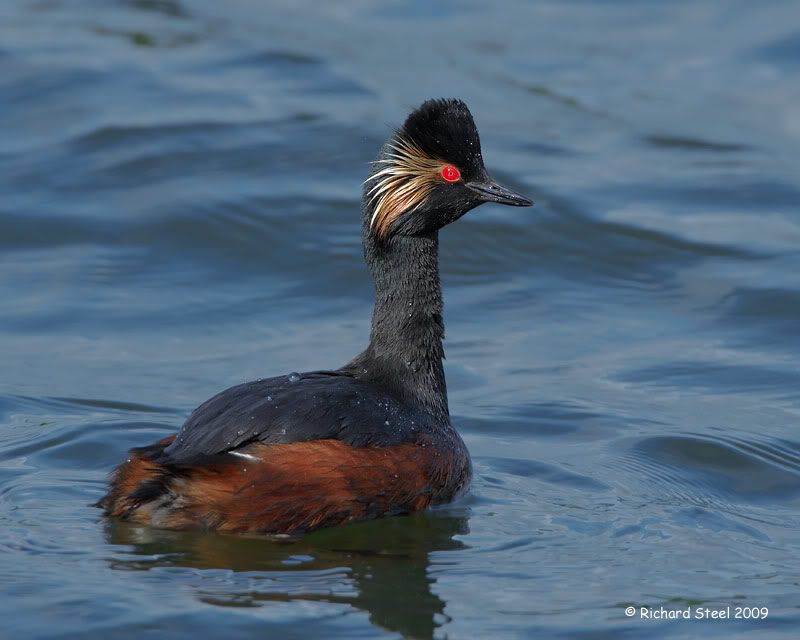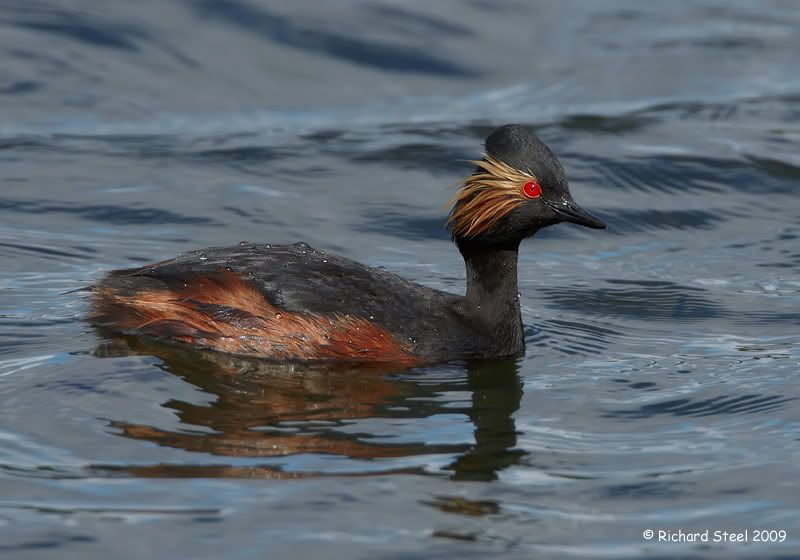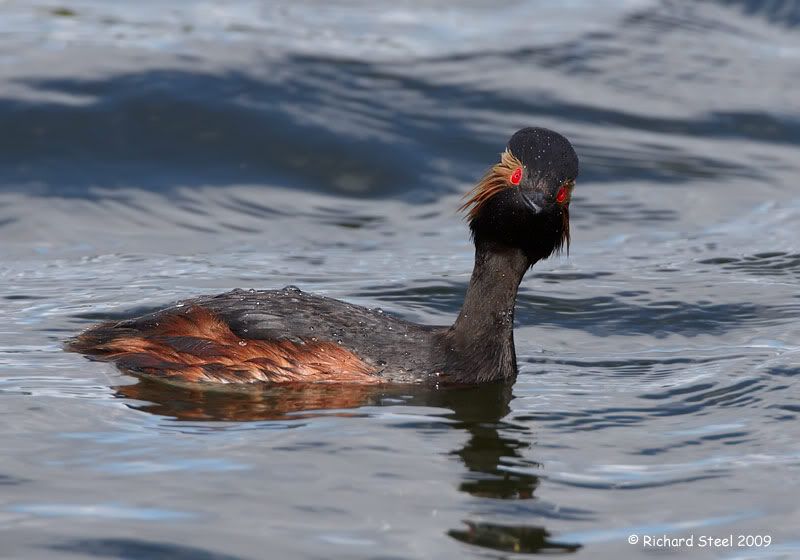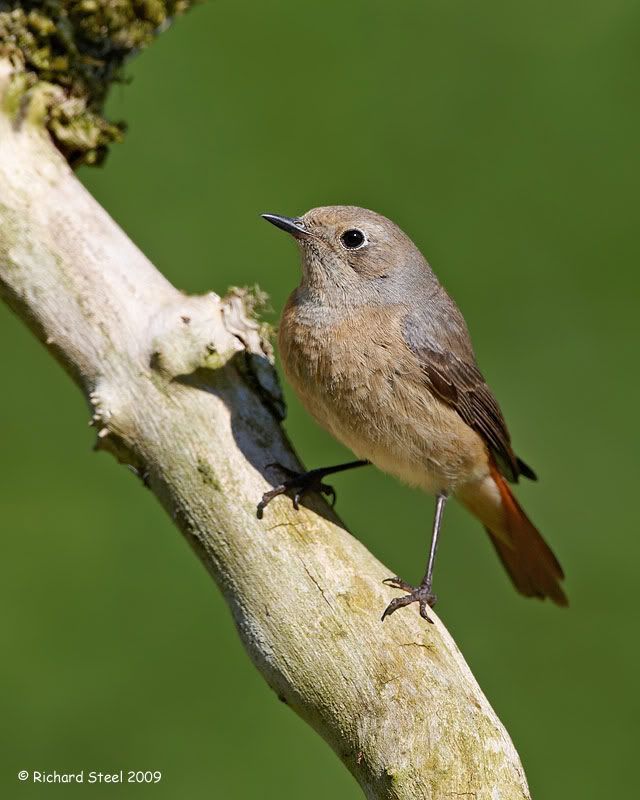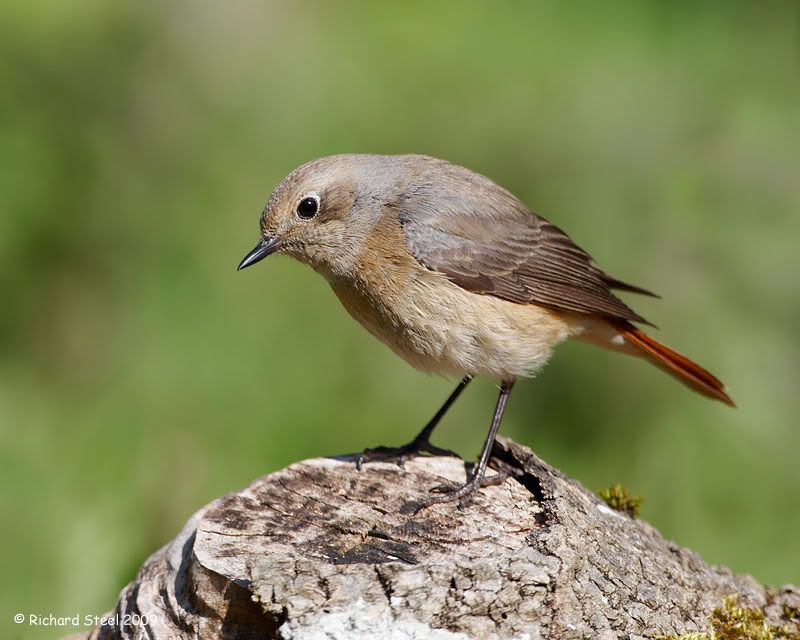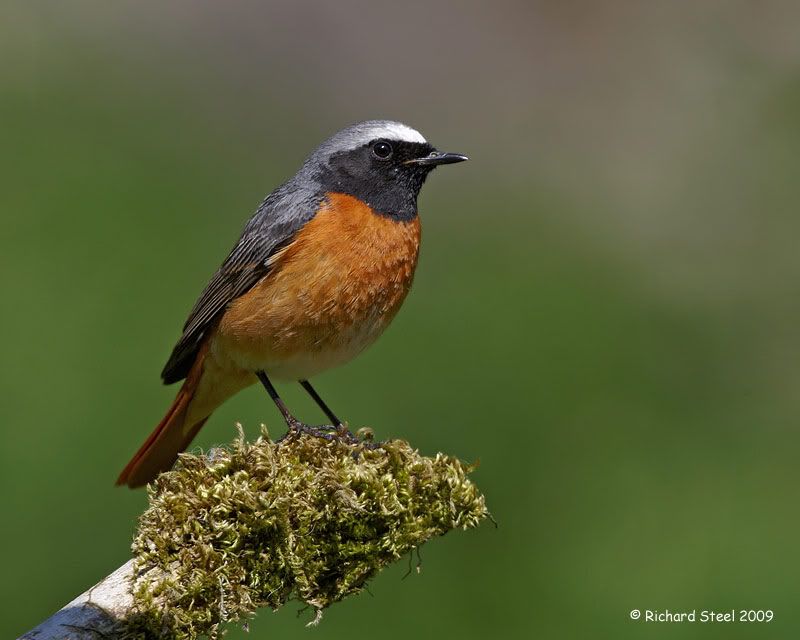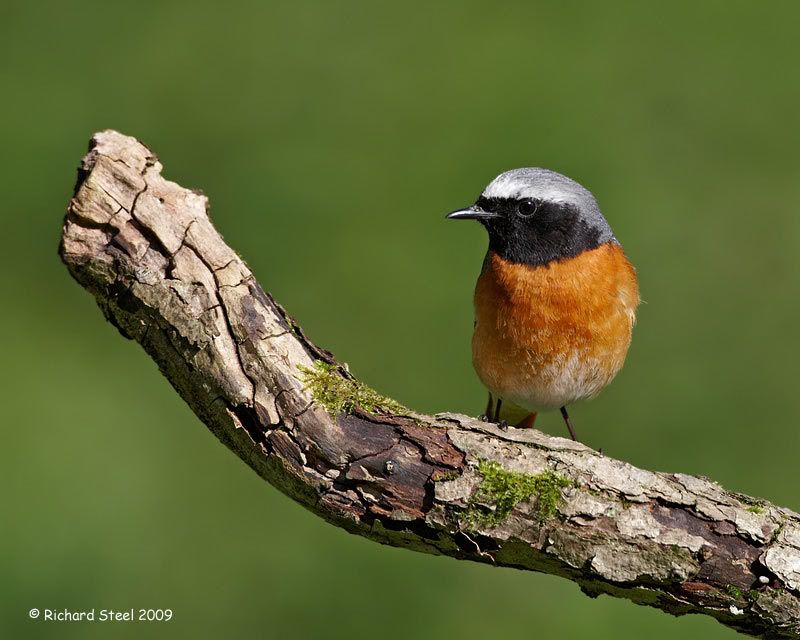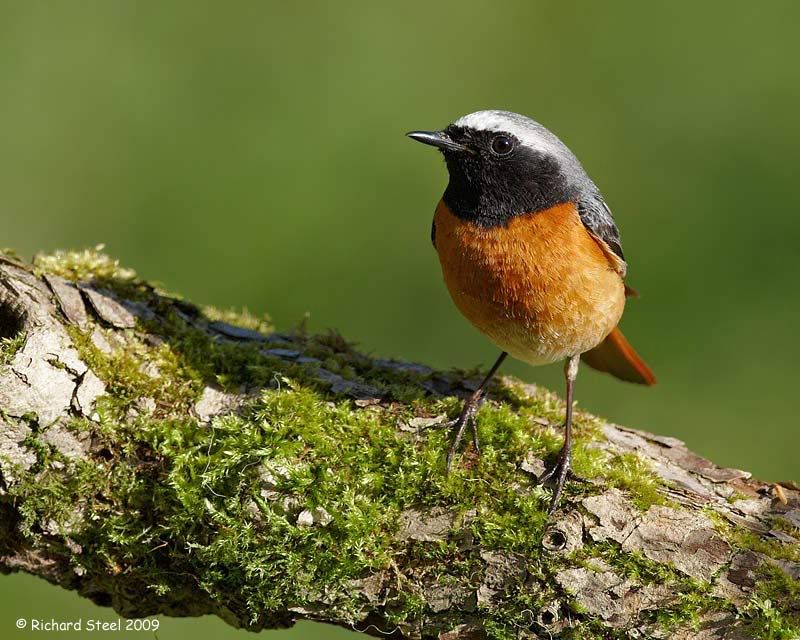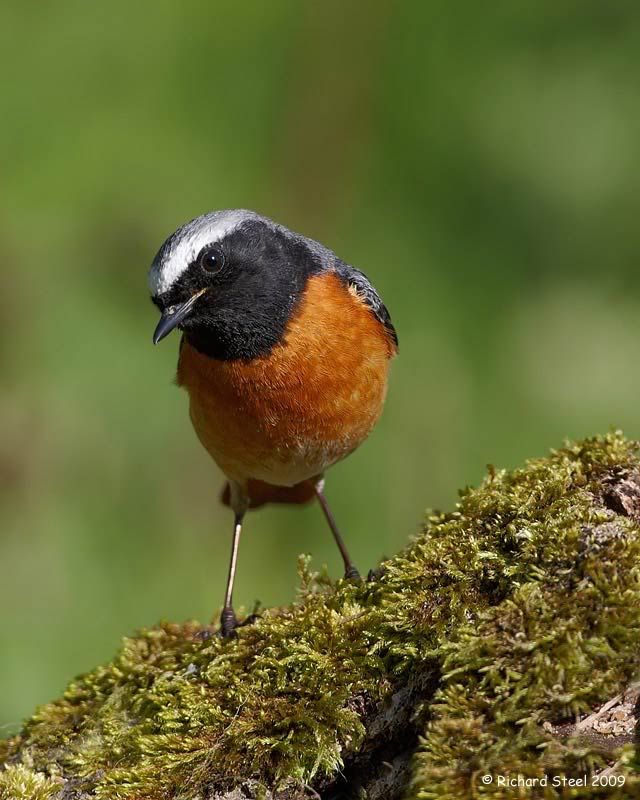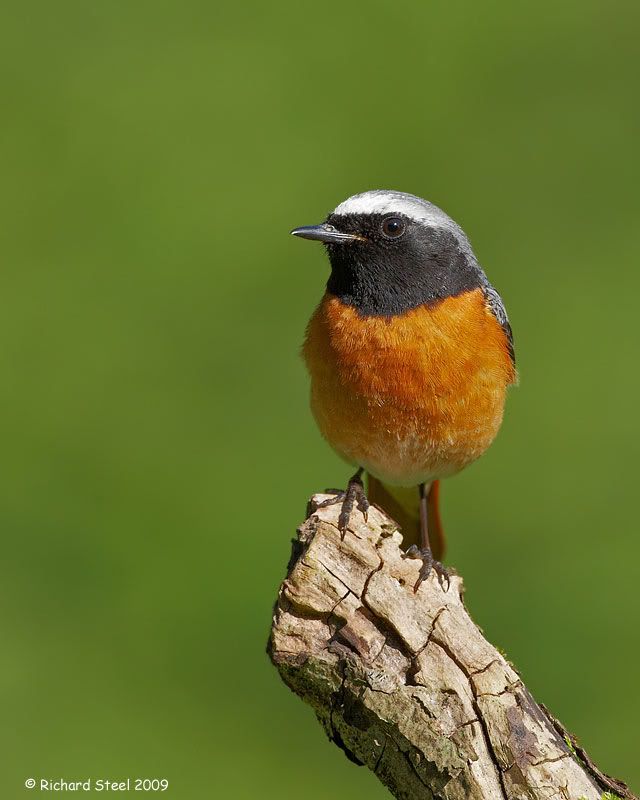Swallowing Swallows
I have not had much time with the camera lately as I have been very busy in work. As I pulled in to my office car park yesterday, I noticed a row of recently fledged swallows lined on along the fence of the adjacent field. I had about 20 minutes left of my lunch hour so decided to put it to some use.
Adult swallows feeding their young is great fun to watch as the usually do it on the wing, swooping in and dropping off the food before carrying on their hunt for more. In terms of photography you are provided with an early warning of an approaching adult by the young birds.
The fluttering wings and gaping mouth a sure sign that food is en route and its time to get ready with the shutter finger.
The flying skills of the adults to deliver their food payload with such accuracy has to be admired.
However, this adult landed next to the young bird and released a live fly which was then watched flying off by the fledgling whose reactions where too slow.
Precision hovering in front of the young one
Is this why they are called swallows?
The fifteen minutes was over all to quickly and I returned back in to the office to carry on working through some spreadsheets. I had a quick scan through the photographs and did not get the image in my head that I wanted to capture so thought I would give it an hour when work had finished. Unfortunately during the course of the afternoon the clouds gathered overhead which by the end of work had turned into a steady downpour of rain.
I have not had much time with the camera lately as I have been very busy in work. As I pulled in to my office car park yesterday, I noticed a row of recently fledged swallows lined on along the fence of the adjacent field. I had about 20 minutes left of my lunch hour so decided to put it to some use.
Adult swallows feeding their young is great fun to watch as the usually do it on the wing, swooping in and dropping off the food before carrying on their hunt for more. In terms of photography you are provided with an early warning of an approaching adult by the young birds.
The fluttering wings and gaping mouth a sure sign that food is en route and its time to get ready with the shutter finger.
The flying skills of the adults to deliver their food payload with such accuracy has to be admired.
However, this adult landed next to the young bird and released a live fly which was then watched flying off by the fledgling whose reactions where too slow.
Precision hovering in front of the young one
Is this why they are called swallows?
The fifteen minutes was over all to quickly and I returned back in to the office to carry on working through some spreadsheets. I had a quick scan through the photographs and did not get the image in my head that I wanted to capture so thought I would give it an hour when work had finished. Unfortunately during the course of the afternoon the clouds gathered overhead which by the end of work had turned into a steady downpour of rain.

